Posted by Elena del Valle on April 13, 2020
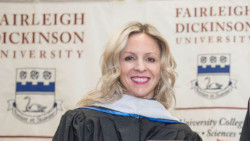
Krista Jenkins, Ph.D., professor, Politics and Government, Fairleigh Dickinson University
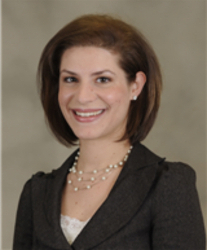
Julie Kalabalik-Hoganson, PharmD, director, Pharmacy Practice, Fairleigh Dickinson University
Photos: Krista Jenkins, Julie Kalabalik-Hoganson
A podcast interview with Krista Jenkins, Ph.D., professor of Politics and Government, and Julie Kalabalik-Hoganson, PharmD, director, Pharmacy Practice, Fairleigh Dickinson University, about pharmacists in COVID-19 front lines is available in the Podcast Section of Hispanic Marketing and Public Relations, HispanicMPR.com.
Julie is associate professor of Pharmacy Practice at Fairleigh Dickinson University School of Pharmacy and Health Sciences. She coordinates and teaches several courses in the Doctorate of Pharmacy program. She is a registered pharmacist in New Jersey and is dual board certified in pharmacotherapy and critical care.
Krista is the director of FDU’s survey research center, The FDU Poll. She is the author or co-author of A New Engagement? Political Participation, Civic Life and the Changing American Citizen, Mothers, Daughters, and Political Socialization, and Where Have All the Heroes Gone?
To listen to the interview, scroll down and click on the play button below or locate the “Podcast” section on the right hand side, then choose “HMPR Krista Jenkins, Ph.D., Julie Kalabalik-Hoganson, PharmD” or download the MP3 file to your iPod or MP3 player to listen on the go, in your car or at home from the RSS feed. Some software will not allow flash, which may be necessary for the podcast player. If that is your case, you will need to download the file to play it. To download it, click on the arrow of the recording you wish to copy and save it to disk. The podcast will remain listed in the April 2020 section of the podcast archive.
Posted by Elena del Valle on April 6, 2020
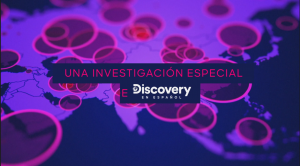
Video: Discovery en Español
Looking for more information on the COVID-19 pandemic in Spanish? At 9 p.m. E/P Wednesday April 8, 2020 Discovery en Español will air COVID-19: Pandemia 2020, a 43-minute special. The original program was in English. The Discovery en Español version will be in Spanish. Scroll down to watch a video clip in Spanish.
The special features suspenseful background music, news clips, domestic and international archive footage and on camera interviews with a handful of individuals from Mercatus Center at George Mason University, University College London, Council on Foreign Relations, The New York Times, and University Wisconsin-Madison.
The special outlines the general way the disease spread throughout China and other countries around the world in months, prompting a widespread quarantine in China, quickly mimicked by other countries.
It explains that the Center for Disease Control and Prevention (CDC) refused to adopt the COVID-19 test offered by the World Health Organization (W.H.O.), insisting on developing its own. This caused grave delays as the initial tests were faulty. According to one expert interviewed on the program flattening the curve efforts will result in the same number of people being stricken by the virus. It will take longer than without the social isolation measures.
The program was produced by ITN Productions for the Science Channel. The executive producers for ITN Productions are Ian Russell and Sarah Jane Cohen; Nick Powell is the producer. The executive producer for Discovery and Science Channel is Gretchen Eisele. The special will repeat on Sunday, April 12 at 10 p.m. and will also be available in the Discovery en Español Go app.
Posted by Elena del Valle on April 1, 2020

Latino Orlando
Photos: Simone Delerme
Simone Pierre Delerme, Ph.D. is McMullan associate professor, University of Mississippi’s Center for the Study of Southern Culture and Department of Sociology and Anthropology. Targeting college students, educators, policy makers, and others interested in migration experiences she wrote Latino Orlando Suburban Transformation and Racial Conflict (University of Florida Press, $80), a 181-page hardcover book mainly about Puerto Ricans in the Orlando area published this year.
“The intended academic audience includes undergraduate students and scholars in the disciplines of Anthropology, Sociology, Latino Studies, American Studies, Southern Studies, and Florida Studies,” she said by email. “The book is concise and intentionally written in simple enough language to be adopted by introductory undergraduate courses in all of these disciplines, but the engagement with critical race theory will appeal to more theoretically driven, advanced audiences.”
The most significant finding or takeaway from the book? “Latino migrants are complicating racial categorizations and challenging the deep-rooted black-white binary that has long prevailed in the American South. Language and the changing soundscape became a way of racializing and segregating Latino communities, leading to the growth of suburban ethnic enclaves,” she said.
“The research was conducted in the counties that are referred to as Greater Orlando or the Orlando Metropolitan Statistical Area,” she said when asked about the title. “Therefore, I wanted to include the term ‘Orlando’ in the title so audiences knew the part of the south that I focus on. The population I focus on is primarily Puerto Rican, but does include the voices of other Latinos. Therefore, the term ‘Latino’ was more inclusive and representative of the population documented in the book.”
The book features Introduction: New Destinations; Buenaventura Lakes; Latinization, Landscapes, and Soundscapes; The Fractured American Dream; Social Class Distinctions and the Latino Elite; The Encargado System; and Conclusion. The first three chapters focus mainly on Puerto Ricans and a Puerto Rican concentrated residential and commercial enclave, the author said. The next two chapters, about Latinos involved in business networking organizations and the Encargado System, features Cuban, Colombian, Guatemalan, Venezuelan, and Mexican perspectives.
When asked about the term Latino or Hispanic she said, “In the book, I use the terms Latino and Hispanic interchangeably, although there is a difference. Most of my informants and interviewees preferred to be identified as ‘Mexican,’ ‘Venezuelan,’ or ‘Colombian,’ for example. When they did use one of the umbrella ethnic terms, the preference was actually Hispanic, not Latino. It really depended on the individual’s preferences though, which is why I use both terms. I try to use the language that my interviewees and informants use to describe themselves. The term Puerto Rican is also tricky because those from the diaspora are sometimes identified and perceived as Nuyorican, and there is a distinction made between those from the island of Puerto Rico and those that were born and raised in New York City, for example. I use the term Puerto Rican if my interviewees and informants identified that way. Usually those who were born on the island of Puerto Rico or have family from Puerto Rico identified as Puerto Rican.”
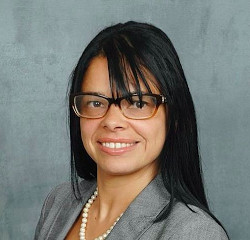
Simone Delerme, author, Latino Orlando
“The term Hispanic, which the United States Census Bureau created in the 1970s, refers to all people in the United States whose ancestry is from one or more Spanish-speaking countries,” she said to explain how she distinguished Hispanic from Latino in the book. “The term thus emphasizes language, not geographic origin, as the identifying factor. The term Latino, which originated within the community, instead focuses on geography and is ‘an attempt to embrace all Latin American nationalities, including those which neither have ties to Spain nor are necessarily Spanish-dominant groups,’ such as Brazilians and various indigenous groups living in Latin America.”
Delerme specializes in migration to the United States South, with interests in race relations, integration and incorporation, community development, and social class inequalities. The book cover is based on a photograph Delerme took of a house in the Buenaventura Lakes suburb that had an American flag and Puerto Rican flag flying in the front lawn. She is conducting fieldwork for a second book, International Memphis: Migration and Transformation in the Mid-South. She is researching “how migrants are being incorporated into the social, political, and economic life of Memphis, Tennessee, a city with a history of segregation and a historic black-white racial binary.”
From idea to publication the project required 10 years. She received an in-residence fellowship from the Center for Puerto Rican Studies at City University of New York (CUNY) Hunter College after she completed her data collection. She is also Truman Scholar, which includes a financial award, which facilitated the fieldwork and data collection for the book. None of the informants or interviewees mentioned in the book was compensated financially, she said.
The book is part of the Southern Dissent series, which seeks to explore and analyze the role of dissent in the south, and document the experiences of dissenting groups during different time periods and in different places.
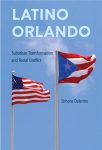
Click to buy Latino Orlando
Comments:
Filed Under: Books
Posted by Elena del Valle on March 25, 2020
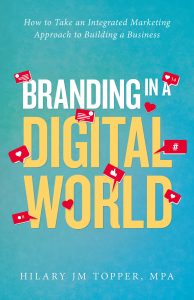
Branding in a Digital World
Photos: HJMT Public Relations
Hoping to reach an audience of small businesses Hilary Topper, chief executive officer, HJMT Public Relations, wrote Branding in a Digital World How to Take an Integrated Marketing Approach to Building a Business (iUniverse, $20.99), a 278-page softcover book published last year. Written in an easy to read style the book, divided into 38 chapters, emphasizes positive outcomes. Each chapter ends with the author’s observations on the topic. The author funded the book with her savings. She said by email that no third parties donated to or funded her book project in any way; she didn’t compensate anyone for interviews or for permission to share their story.
In response to a question on what prompted her to write the book the adjunct professor at Hofstra University said, “I have been teaching a course in Digital Communications for the last six years. To make it more fun for the students, I ask them to develop their brand. Then we work on an integrated marketing plan together. I decided to write this book last year and started writing it in April 2019. I had it finished and at the publisher in December 2019.”
Her goal? “I hope that I can help business owners learn to become a little more structured and think more about how to brand and market themselves so that they have a direction. The most important thing is determining who your buyers are and then developing a plan.” Asked what makes her book stand apart she said, “It’s more of a workbook so that a small business owner can use it as a tool to get them to the next level.”
Asked about the importance of diversity she said, “Diversity in almost any business is important. But, different groups are in different places. Once you know who your buyers are, you will know where they live and how to market to them.”
When asked about her greatest challenge writing the book, she replied, “This book was a challenge. I interviewed 30+ people, did a ton of research and used some of the materials from my course. Pulling it together was a great accomplishment. Seeing it in my students hands makes me feel proud.”
When asked about the ethical line readers such be mindful of when promoting their businesses she said, “You need to feel good about what you promote and be able to sleep at night. If I don’t want to work with someone, I won’t do it, no matter how much I could get paid.”

Click to buy Branding in a Digital World
Comments:
Filed Under: Books
Posted by Elena del Valle on March 16, 2020

Shiva Nag Kompella, Ph.D., post doctoral research associate, University of Manchester
Photo: Shiva Nag Kompella
A podcast interview with Shiva Nag Kompella, Ph.D., post doctoral research associate, University of Manchester is available in the Podcast Section of Hispanic Marketing and Public Relations, HispanicMPR.com. During the podcast, he discusses how air pollution is breaking our hearts with Elena del Valle, host of the HispanicMPR.com podcast.
Shiva is an electrophysiologist who works with Holly Shiels, a senior author of Poly-aromatic Hydrocarbons in Pollution: A Heart Breaking Matter published in the Journal of Physiology January 2020.
He completed a Ph.D. degree in biomedical sciences from the Royal Melbourne Institute of Technology in Melbourne, Australia, followed by two years of postdoctoral work at the University of Sydney, where he worked on the development of small peptides and molecules for novel therapeutics. With a strong background in ion channel pharmacology, he is currently investigating the cardiotoxicity of poly-aromatic hydrocarbons (PAHs) at the cellular level.
To listen to the interview, scroll down until you see “Podcast” on the right hand side, then select “HMPR Shiva Nag Kompella” and click on the play button below or download the MP3 file to your iPod or MP3 player to listen on the go, in your car or at home from the RSS feed. Some software will not allow flash, which may be necessary for the play button and podcast player. If that is your case, you will need to download the file to play it. To download it, click on the arrow of the recording you wish to copy and save it to disk. The podcast will remain listed in the March 2020 section of the podcast archive.
Posted by Elena del Valle on March 11, 2020

Patch adhesive strips
Photo: HispanicMPR.com
Nutricare, an Australian company, released Patch, a line adhesive strips described as 100 percent compostable and hypoallergenic. Made somewhere in China (Guangzhou, China is listed on the package) from bamboo fiber the strips are free of plastics, latex, silicone, and harmful toxins, according to promotional materials. They are designed for easy pain-free removal with sensitive skin and aged skin in mind. Each package of 25 strips retails for just under $9 and has an expiration date. The sample packages we received expire June 2021.
“The bandages and all packaging breaks down into soil in just a matter of weeks,” according to a company press release. Four product lines are available Patch Natural, Patch Coconut Oil Kids for abrasions and grazes, Patch Aloe Vera for burns and blisters, and Patch Activated Charcoal for bites and splinters.
In the United States, the products are for sale on the company website, Amazon, Grove Collaborative, Anthropologie and CVS as well as select grocery stores and specialized retailers. The Patch website indicates the company uses a Lyocell production process (a cellulose fabric made by an organic solvent spinning process), “considered to be the most environmentally friendly method of manufacturing bamboo cloth fibre. This is because it is more sustainable than most common chemical processing methods.”
According to the product website, the brand uses “specially curated pressure sensitive adhesive (PSA) formulation, made from a combination of minerals and applied with nano technology process (think tiny suction cups)” to adhere to the skin. According to a press release Nutricare is an “environmentally conscious and solutions-focused brand” working to create natural solutions to common health care items.
Posted by Elena del Valle on March 4, 2020

The scenery was breathtaking.
One my most vivid memories from a 2019 trip to the South Island of New Zealand was a private helicopter ride over the popular Tasman National Park. A little after breakfast, my pilot landed a 2008 Eurocopter EC120 helicopter on the property lawn at the intimate lodge where I was staying. I quickly bid fellow guests and the property owners good-bye.

Logan Moore, pilot, Tasman Helicopters in front of the Eurocopter EC120 before our departure
Minutes later Logan Moore, chief executive officer and pilot of Tasman Helicopters (Tangmere place, Nelson Airport, South Island, New Zealand www.tasmanhelicopters.co.nz, info@tasmanhelicopters.co.nz, +64 03 528 8075), and I were airborne. Although the vessel could accommodate four passengers I was the sole one that morning.


At Wharariki Beach

At the Mount Olympus Lord of the Rings film site
On our way to Motueka Airport to meet my guide we flew over the expansive and unspoiled property where I had stayed, the nearby pristine coast and the popular Tasman National Park. We also stopped twice, at Wharariki Beach and at the Mount Olympus Lord of the Rings film site. The scenery was beautiful, the flight smooth and pleasant. With the exception of the park we saw no people. Because of the beautiful scenery and comfort the flight was one of the highlights of the trip. It was a heady experience I would enjoy repeating and recommend to friends.
Posted by Elena del Valle on February 27, 2020

Blood Lions poster – click to enlarge
Photos, video: Blood Lions
There may be as many as 12,000 lions in 350 breeding farms in South Africa living a desperately sad existence, according to Pippa Hankinson. She became appalled at the conditions of the captive lions in a remote breeding farm she visited in South Africa in 2011. After researching the subject at length and finding there were many similar farms she set out to share her discovery with the world. Four years later Blood Lions, an 84-minute feature documentary became available internationally. Scroll down to see a trailer.
“After over a year of intensive research, it was apparent that very few people were aware of the full extent of the industry – neither abroad nor in South Africa,” Hankinson, producer, Blood Lions, said by email when asked about the film*. “I felt strongly that the world needed to know, and decided that a film would be the most expedient way to create global awareness around what I saw as being complete exploitation.”
About the target audience for the film she said, “Widely speaking, the target audience for Blood Lions is the general public – particularly the youth – around the world. More specifically we aim to educate the travel industry i.e. tour operators sending clients to South Africa, as well as to empower tourists and young volunteers to encourage them to make responsible and ethical choices when visiting this country. And lastly we invite all those in positions of influence around the world to watch the film, and to help elicit policy change which will ensure the protection of all predators (and indeed all our wildlife) from cruelty, exploitation and commercial practices which are harmful and disrespectful, and which create ‘markets’ for the abusive and unethical use of our wildlife.”
The goal? “Blood Lions was produced to shine a light on the insidious practices of predator breeding and canned lion hunting in South Africa, as well as associated activities such as interactive tourism and the lion bone trade to SE (south east) Asia. Our aim was to reach as broad an international audience as possible in order to build global awareness and knowledge around the industry. It was – and still is – a ‘call to action,’ not only to effect behavioural change around how we treat our wildlife, but also to precipitate change in policy through garnering support from the world’s most influential individuals and organizations. Ultimately, we hope to see an end to captive predator breeding.”
When asked how easy filming was she said, “Our main challenge when filming Blood Lions was to appear as ‘amateur’ as possible, whilst at the same time securing HD (high definition) quality documentary video footage, so our filming/production approach was to be as low key as possible. This meant only one camera person – using highly mobile camera/audio equipment – who often posed as a tourist. A ‘spy camera’ was used to capture certain scenes where a conventional camera might have aroused suspicion. The use of a stills camera that was also able to shoot video, was also very useful in keeping a low profile. Another critical component of the film was the challenge of obtaining imagery from volunteers or staff who working on the captive lion breeding farms, who had the ability to get unique access to ‘behind the scenes’ animal and human behaviour. Suspicious predator breeding and hunting farm operators made life very difficult for us when they tipped off their colleagues that ‘greeny’ photo journalists were asking questions and capturing images on their properties. Some of the farms were therefore expecting us, and after a lot of threats, demanded that we leave the premises immediately we arrived. It was on these occasions that our hidden camera paid off. When we visited the hunting farm, our team posed as a private small film crew who were following an American client to make his own personalised African hunting safari video. This worked until such time that canned lion hunting operators once again became suspicious, and went so far as threatening to ‘kill us’ which forced our camera team to immediately leave their fenced hunting farm.”
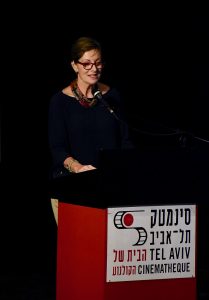
Pippa Hankinson, founder, Regulus Vision Pty Ltd
Many farm raised captive animals are hunted. When asked why she focused on lions the film producer said, “As you say, many farms raise captive animals to be hunted, but there is a ‘double-edged sword’ to the breeding of predators as they are not only bred to be hunted, but for their bones to be exported to supplement the ‘tiger bone trade’ in SE Asia. No other wild animals are hand-raised and bottle fed…simply for the bullet. Furthermore, most internationally recognised lion ecologists agree that the captive lion breeding industry has no conservation value whatsoever. Although captive hunting statistics have decreased, the demand for lion bones from Asia has increased dramatically over the last few years, leading to fears that this demand will inevitably put pressure on wild populations, as poaching increases and the illegal trade and trafficking intensifies.
Although my passion for wildlife extends to all animals, it seemed incomprehensible to me that these magnificent, iconic predators should be exploited in such a way. Lions are a keystone species at the top of the food chain, and they play a critical role in our ecosystem. There is no doubt in my mind that they are wild creatures, and that all wild species should be allowed to live out their lives in their natural habitat, and not forced into captivity to be mass bred for commercial purposes. To lion breeders in South Africa they are seen simply as commodities to be used to generate a lucrative income through interactive tourism and volunteering, trophy hunting and the sale of their body parts. It is now estimated that there are between 8,000 and 12,000 predators currently being held captive in over 350 breeding facilities across South Africa… very similar to ‘puppy mills’ in the USA. They lead heartbreaking lives and the cycle never ends.
Lion cubs born in captivity in South Africa are removed from their mothers within the first week of birth, and are passed off as ‘orphans’ or ‘rescues’. This practice of removing the cubs forces the females into intensive breeding cycles where lionesses produce up to five times more litters of cubs than they would in the wild. These tiny cubs are bottle fed, petted and hand-reared by paying tourists and volunteers who are led to believe that they are supporting authentic conservation projects which will rehabilitate these predators back into the wild. Nothing could be further from the truth. When the cubs grow too old for ‘pay and play’ activities, many are moved to facilities that offer ‘walking with lions’ tourist attractions. These sub-adult lions are often sedated, and trained in the same way as circus animals, to climb trees and pose for ‘selfies’ with paying tourists: facebook.com/BloodLionsOfficial/videos/1039594396154923/
Once these lions are considered too dangerous to be in contact with humans, some are sent to canned (captive) hunting facilities where they are shot in confined enclosures by trophy hunters. Others are sold to zoos or traders as breeding stock for new facilities, or private collections around the world. Completing the cycle of exploitation, lions that are not used for the above purposes are euthanized or slaughtered for their body parts to be exported to Asia to supplement the ‘tiger bone trade.’ The skeletons are utilised for medicinal and aphrodisiacal purposes in the production of what is called ‘tiger wine’ and ‘tiger cake,’ and also for use in ‘tiger bone jewellery’: facebook.com/BloodLionsOfficial/videos/1062460323868330/. This trade is also extremely worrying from a welfare perspective, as animals shot for their trophies in canned hunts are required to be in a reasonably good condition, whereas lions bred for the bone trade are bred intensively with little or no consideration towards their health or welfare: facebook.com/BloodLionsOfficial/videos/1447633032017722/”
Eighteen months after her deeply disturbing visit to a South African lion breeding farm in 2011, Hankinson founded Regulus Vision Pty Ltd to produce Blood Lions. She remains actively involved in the Blood Lions Campaign launched after the film’s release, “in order to continue to create further global awareness around the exploitation of the captive lion breeding industry.” The Blood Lions team members are Bruce Young and Nick Chevallier, directors; Hankinson and Jeremy Nathan, producers; Ian Michler, special consultant and lead character; Wildlands and Andrew Venter, executive producers; Bruce Young, script; Nick Chevallier, camera; and Dave Cohen, editor.
In 2015, Blood Lions premiered at the Durban International Film Festival in South Africa. Engagements with MSNBC and Discovery International followed. The film has appeared in 180 countries and territories around the world. It was screened at 17 international film festivals and hosted by the Blood Lions team in 25 countries. In the United States Blood Lions is available online at the PBS shop, Amazon, Ecostreamz and the Wildlife Conservation Channel.
*Text edited for style, length and clarity.
Posted by Elena del Valle on February 17, 2020
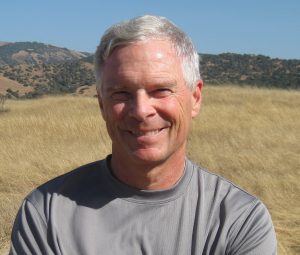
Gary Dudney, author, The Mindful Runner
Photo: Anna Deeb
A podcast interview with Gary Dudney, author, The Mindful Runner: Finding Your Inner Focus is available in the Podcast Section of Hispanic Marketing and Public Relations, HispanicMPR.com. During the podcast, he discusses running with Elena del Valle, host of the HispanicMPR.com podcast.
Gary is also the author of The Tao of Running: Your Journey to Mindful. Both were published by Meyer & Meyer Sports, one of Europe’s largest sports publishers. In his books he explores the mental side of running. He has contributed articles to Runner’s World, Running Times, Trailrunner, and Marathon & Beyond; and he has been a regular columnist for Ultrarunning magazine for over 10 years. He has completed over 70 one hundred mile trail races on his quest to run 100 one hundred mile runs, including at least one in every state. His home base is Monterey, California.
To listen to the interview, scroll down and click on the play button below or locate the “Podcast” section on the right hand side, then choose “HMPR Gary Dudney” or download the MP3 file to your iPod or MP3 player to listen on the go, in your car or at home from the RSS feed. Some software will not allow flash, which may be necessary for the podcast player. If that is your case, you will need to download the file to play it. To download it, click on the arrow of the recording you wish to copy and save it to disk. The podcast will remain listed in the February 2020 section of the podcast archive.





























